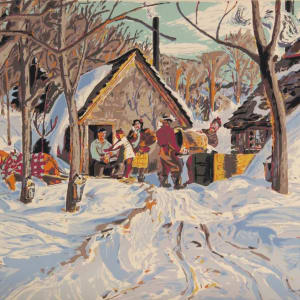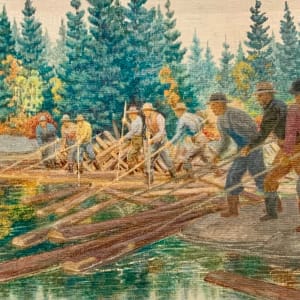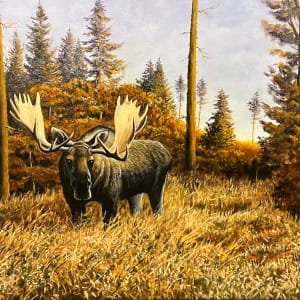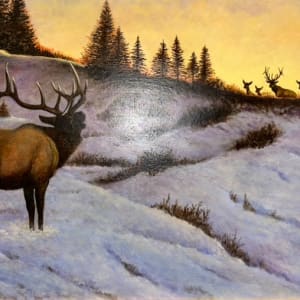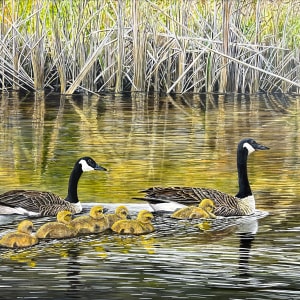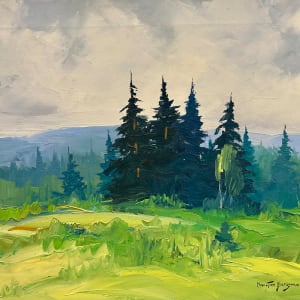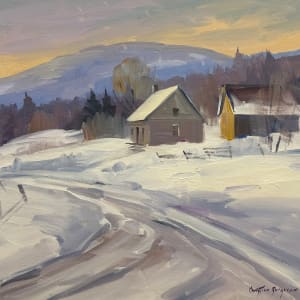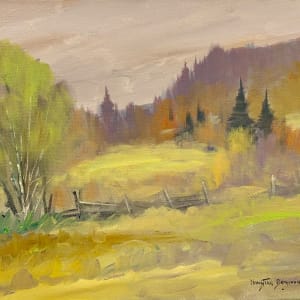Maud Lewis (1903-1970)
Maud Lewis (1903–1970) was a Canadian folk artist from Nova Scotia, renowned for her vibrant and cheerful paintings that depict landscapes, animals, and flowers. Born in South Ohio, Nova Scotia, she spent most of her life in poverty, living in a small house in Marshalltown. Despite facing physical challenges due to arthritis, Lewis's work was characterized by its use of bright colors and simple, nostalgic scenes inspired by her childhood memories. Her paintings were sold directly from her home and became widely recognized in the 1960s. Although she never had a museum exhibition during her lifetime, her art is now celebrated in major collections, including the Art Gallery of Nova Scotia. Lewis's painted house has become a major tourist attraction, and her works continue to be sought after, with prices reaching over $350,000 at auction.
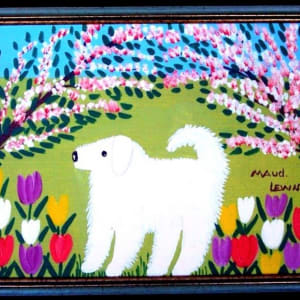
Bertram Charles (B.C.) Binning (1909-1976)
Bertram Charles Binning (1909–1976), known as B.C. Binning, was a renowned Canadian artist, educator, and architect. Born in Medicine Hat, Alberta, Binning was recognized for his detailed line drawings and semi-abstract paintings. He studied at the Vancouver School of Decorative and Applied Arts and later pursued further education in London and New York. Binning's innovative work was influenced by his love of the B.C. Coast, often depicting nautical themes and architectural forms.
A passionate educator, Binning taught at the Vancouver School of Art (now Emily Carr University) and played a key role in the development of the Department of Fine Arts at the University of British Columbia (UBC). He was instrumental in founding the UBC Festival of Contemporary Arts and helped establish the Nitobe Garden at UBC. Binning's work was internationally recognized, with notable exhibitions, including the 1954 Venice Biennale. He was made an Officer of the Order of Canada in 1971. His legacy endures through his artwork, the Binning Residence in West Vancouver, and his contributions to Vancouver’s cultural landscape.
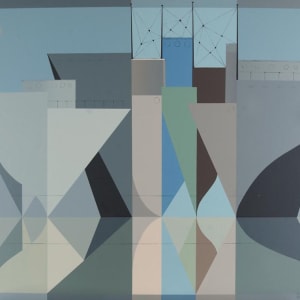
Alison Newton (1890-1967)
Alison Newton (1890-1967) born in Scotland, Newton attended art school at Trinity Academy in Edinburgh.She arrived in Winnipeg with her parents in 1910 and was hired as an advertising and catalogue illustrator for the T. Eaton Company. During her life, Newton belonged to numerous professional arts organizations including the Winnipeg Sketch Club and Manitoba Society of Artists – the latter of which she served as President – as well as the Federation of Canadian Artists. She exhibited her work at the National Gallery of Canada in 1932 and with the Royal Canadian Academy of Arts in 1941. Newton moved to Toronto in 1952, where she continued to teach and work until her death in 1967.
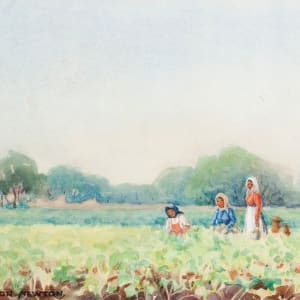
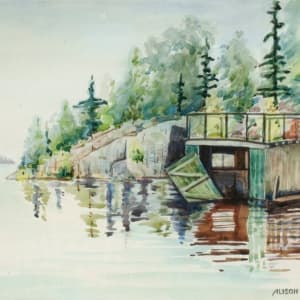
Peter Sawatzky
Peter Sawatzky is a world-renowned bronze sculptor celebrated for his masterful depictions of wildlife. Growing up near Sommerfeld, Manitoba, he initially pursued commercial art at Red River College before discovering his passion for carving wooden bird sculptures in 1974. His early success led him to international recognition, and by the mid-1980s, he had established his own foundry to work in bronze.
Sawatzky’s deep appreciation for nature and wildlife is evident in his large-scale public sculptures across Canada and the United States. Notable works include Perilous Crossing in Selkirk, Seal River Crossing in Winnipeg, and Mother Polar Bear and Two Cubs at Assiniboine Park Zoo. Honored with the Order of Manitoba in 2008, he continues to create from his home in Glenboro, Manitoba.
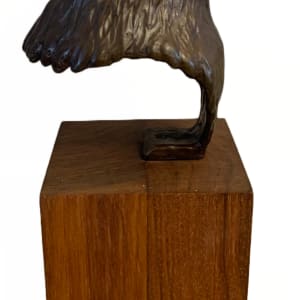
Fritz Brandtner (1896-1969)
Friedrich Wilhelm "Fritz" Brandtner (1896–1969) was a German-born Canadian artist known for his work as a painter, printmaker, illustrator, muralist, and set designer. Born in Danzig, he studied under F.A. Pfuhle at the University of Danzig before emigrating to Canada in 1928. Settling in Montreal in 1934, Brandtner became an influential figure in the city's art community, helping establish the Children's Art Centre in 1936. A passionate educator, he introduced German Expressionism and Bauhaus influences to Canada, later embracing abstraction in his practice. Brandtner's work was showcased at the 1948 Summer Olympics, and his legacy was celebrated posthumously through exhibitions, including a 2011 retrospective at Galerie Valentin in Montreal. He died in 1969.
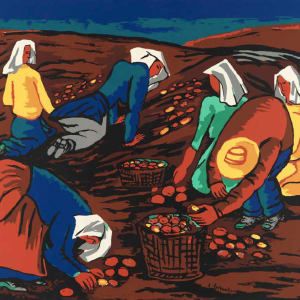
Jan Garett Wyers (1888-1973)
Jan Gerrit Wyers (1888–1973) was a self-taught Dutch-born artist known for his vibrant and heartfelt depictions of prairie life. After emigrating from The Netherlands to Saskatchewan in 1916, Wyers worked as a farmer until his retirement in 1960. His work, which includes scenes of harvests, animals, and farm life, was deeply influenced by his personal experiences and often inspired by memory, observation, and book illustrations. In the 1950s, Wyers began to exhibit his art, gaining recognition in the 1960s when his work was featured in the National Gallery of Canada’s Folk Painters of the Canadian West exhibition. He became an influential figure in the Saskatchewan art scene, attracting attention from prominent modernists like Ronald Bloore and Kenneth Lochhead. Wyers’ art is celebrated for its vibrant colors and strong connection to prairie life, and his influence extended into the 1970s as a pioneer within the folk art community.
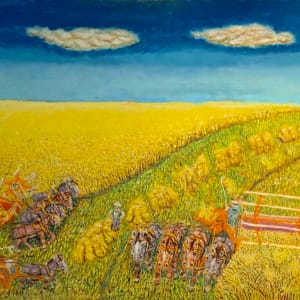
Christian Bergeron
Christian Bergeron is a self-taught Canadian artist from Clermont, Quebec, with over 45 years of painting experience. Early in his career, he studied under the renowned Francesco Lacurto, where he developed his distinctive prismatic style, using a spatula to create dynamic perspectives and enhance light effects in his work.
Inspired by his travels, Bergeron’s paintings capture the essence of Quebec's culture and scenery, as well as more abstract and contemporary subjects. His works are in private and corporate collections across Canada, the United States, and Europe. Known for constantly evolving, he showcases his diverse range of art in his own galleries, offering both traditional and modern pieces. His bold, masterful creations are displayed globally and proudly featured at Mardenart Gallery.
Armand Lemiez (1894-1984)
Armand Lemiez (1894–1984) was a Belgian-born artist who immigrated to Canada in 1911. After homesteading in Grahamdale, Manitoba, in 1912, he spent his life farming and creating art. A passionate painter, Lemiez later expanded his artistic practice in 1967 at the age of 72, when he began producing full-size concrete sculptures on his farm. Over the next nine years, he created approximately two sculptures per year, considering them a gift to the world. His farm became a local attraction, with schoolchildren visiting to admire his works.
As Lemiez neared the end of his life, he expressed concerns about the preservation of his sculptures and tried to donate his land and art to the provincial government. Unfortunately, his folk art was not recognized as culturally significant at the time. Lemiez passed away in 1984, and his sculptures, exposed to the elements, have since decayed.
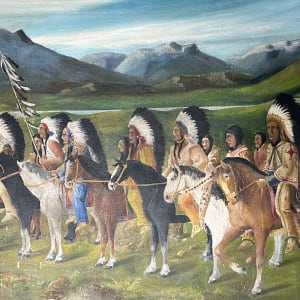
Clarence Gagnon (1881-1942)
Clarence Alphonse Gagnon (1881–1942) was a French Canadian painter, draughtsman, engraver, and illustrator, renowned for his landscapes of Quebec’s Laurentians and Charlevoix regions. Born in Montreal, he studied under William Brymner and later at the Académie Julian in Paris. Influenced by artists like Eugène Boudin and James W. Morrice, Gagnon developed a distinctive style marked by a light color palette and emphasis on the effects of light.
Gagnon achieved early recognition with a bronze medal at the 1904 Louisiana Purchase Exposition. His 1913 solo exhibition in Paris marked a key turning point, showcasing his interpretation of Canadian winter and habitant life. After returning to Canada, he frequently painted the Baie-Saint-Paul area, collaborating with other notable artists such as A.Y. Jackson. Gagnon also worked as an illustrator, notably for Maria Chapdelaine.
Gagnon’s works are in prominent collections across Canada and internationally, including the National Gallery of Canada and the Victoria and Albert Museum. He was a member of the Royal Canadian Academy of Arts and received the Trevor Prize in 1923. Gagnon passed away in 1942, leaving behind a significant legacy in Canadian art.
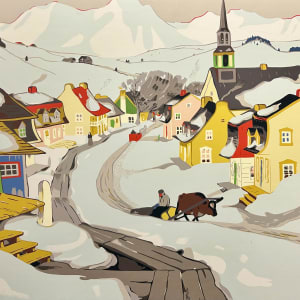
Diana Thorneycroft
Diana Thorneycroft (born 1956 in Claresholm, Alberta) is a Canadian artist based in Winnipeg, Manitoba, known for her provocative photography, sculpture, and installation art. Her work explores themes of sexuality, national identity, and cultural icons, often using staged dioramas to challenge conventional narratives. Thorneycroft’s art blurs boundaries between gender and national identity, incorporating symbolism such as phalluses to explore complex social dynamics.
She holds an MFA from the University of Wisconsin and a BFA from the University of Manitoba. With extensive exhibitions across Canada, the U.S., and Europe, her notable works include Canadians and Americans (best friends forever … it's complicated) and Group of Seven Awkward Moments. Thorneycroft has also taught at the University of Manitoba’s School of Art for 25 years. Her work is held in prominent collections such as the National Gallery of Canada and the Winnipeg Art Gallery.
She has received several awards, including the Manitoba Arts Award of Distinction in 2016.
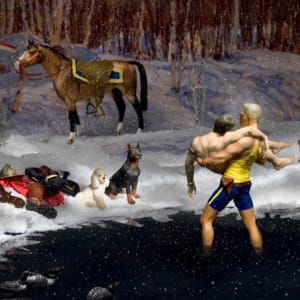
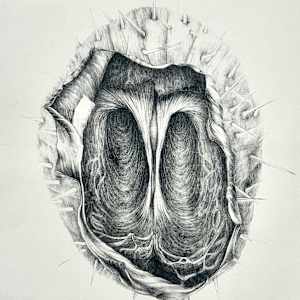
James Edward Harvey (JEH) Macdonald (1873-1932)
James Edward Harvey MacDonald (1873–1932) was an influential Canadian artist, educator, and author, best known as a founding member of the Group of Seven. Born in Durham, England, he immigrated to Canada as a teenager and studied art in Toronto. MacDonald played a pivotal role in shaping Canada's visual identity, creating bold, innovative paintings that captured the country’s rugged landscape. His work spanned urban scenes, portraits, and expansive nature studies. A dedicated teacher and mentor, he was a key figure at the Ontario College of Art and influenced generations of Canadian artists. Despite ongoing health struggles, MacDonald produced a prolific body of work, including major pieces such as Tracks and Traffic and The Elements. He was deeply involved in commercial design as well, producing book illustrations and stage sets. MacDonald’s contributions were recognized with numerous honors, including membership in the Royal Canadian Academy and the Ontario Society of Artists. His legacy endures in Canadian art history through his striking landscapes and his role in the Group of Seven’s formation.
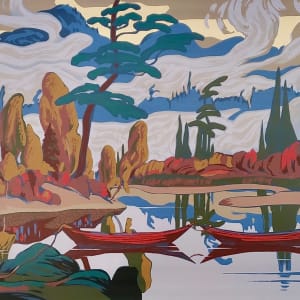
Berthe Des Clayes (1877-1968)
Berthe des Clayes (1877–1968) was a Scottish-born artist known for her work in oil, watercolour, and pastel. Born in Aberdeen, she studied at the Bushey School of Art in England and the Académie Julian in Paris. Des Clayes lived in London from 1906 to 1912 before emigrating to Montreal, where she spent significant periods of her life. She was an active member of the art community, exhibiting with the Royal Canadian Academy of Arts from 1912 to 1947 and winning the Jessie Dow Prize twice.
Des Clayes also contributed illustrations to several books, including Here and There in Montreal and the Island of Montreal (1931) and Acadia (Nova Scotia) for the Dominion Atlantic Railway. Her work is held in major collections, including the Musée national des beaux-arts du Québec, the National Gallery of Canada, and the Art Gallery of Ontario. Berthe’s artistic legacy is also shared with her sisters Alice and Gertrude, both of whom were artists.
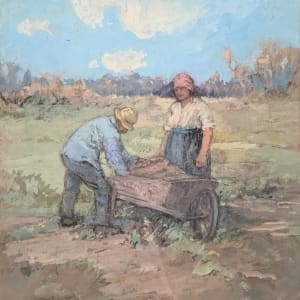
John Arthur Lomax (1857-1923)
John Arthur Lomax (1857–1923) was a British genre painter known for his historical scenes, particularly of the 17th and 18th centuries. Born in Manchester, he studied in Stuttgart and at the Munich Academy before returning to England, eventually settling in London.
His work, often dramatic or sentimental, frequently depicted the English Civil War period. Lomax exhibited widely, including thirty-three paintings at the Royal Society of British Artists, as well as at the Royal Academy, Walker Art Gallery, and Manchester City Art Gallery. Notable works include Thoughts of Christmas, An Old Master, and Flaw in the Title.
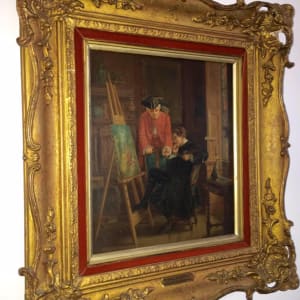
Tom Hopkins (1944-2011)
Tom Hopkins (1950–2011) was a Canadian painter known for his luminous, enigmatic landscapes and still lifes. Born in Prince Edward Island, he studied at Mount Allison University and earned an MFA from Concordia University, where he later taught (1983–1997). He also taught at McGill University and led workshops across Canada and the U.S.. Hopkins’s work blends modernist sensibilities with classical influences, utilizing chiaroscuro techniques to create atmospheric, almost surreal imagery. His mastery of light, color, and surface reflects his deep understanding of traditional painting methods, which he passionately shared through teaching. His paintings are held in public and private collections worldwide.
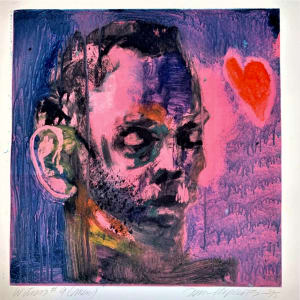
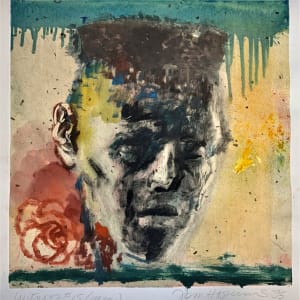
David Blackwood (1941-2022)
David Blackwood (1941–2022) was a renowned Canadian printmaker known for his iconic etchings that captured the history, legends, and society of Newfoundland and Labrador. Born in Wesleyville, Newfoundland, Blackwood’s upbringing in a seafaring family greatly influenced his art. He studied at the Ontario College of Art and later taught at the Trinity College School in Ontario.
Blackwood’s most famous work, The Lost Party, a series of 50 etchings, focused on the Newfoundland sealing disaster of 1914. His prolific career, which included works on the fisheries, seal hunts, and shipwrecks, earned him widespread recognition. His work was featured in several publications and exhibited internationally. Blackwood’s art is held in major collections, including the National Gallery of Canada and the Royal Collection at Windsor Castle. He was appointed to the Order of Canada in 1993 and received numerous honors throughout his career.
Blackwood continued creating art until his death in 2022, maintaining studios in both Port Hope, Ontario, and Wesleyville, Newfoundland.
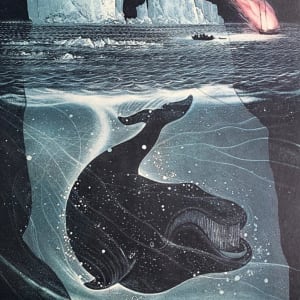
Jean-Paul Lemieux (1904-1990)
Jean Paul Lemieux (1904–1990), one of Canada's foremost 20th-century painters, was known for his evocative depictions of French Canadian life and vast, haunting landscapes. Born in Quebec City, Lemieux studied at the Montreal School of Fine Arts and spent time in Paris, where his style evolved. He had a distinguished teaching career, influencing many at institutions such as the École des Beaux-Arts de Québec. His work progressed through five key periods, from realistic naturalism to minimalist and expressionist styles. Lemieux's most iconic pieces emerged during his Classical period (1956–1970), where solitary figures in stark, expansive landscapes became his signature.
Lemieux’s contributions to Canadian art were recognized with numerous accolades, including the Companion of the Order of Canada in 1968. His works have been showcased internationally, including at the Venice Biennale and through major retrospectives, such as a 1967 show organized by the Montreal Museum of Fine Arts. Lemieux’s legacy endures, highlighted by a set of commemorative stamps issued by Canada Post in 2004 and the Jean Paul Lemieux monument in Quebec. His artwork continues to resonate, influencing Canadian culture and art history.
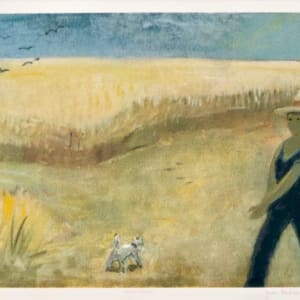
Allen Sapp (1928-2015)
Allen Sapp (1928–2015) was a Plains Cree artist from the Red Pheasant Reserve in Saskatchewan, known for his powerful depictions of life on the reserve. Raised by his grandmother after his mother's death, Sapp faced health challenges that kept him from school, but he turned to art during his illness. A self-taught artist, he began painting with a limited palette, capturing the struggles of his people. In his thirties, he met Dr. Allan Gonor, a patron who helped him build his career. Sapp’s work gained national and international acclaim in the 1960s and 70s, and he became a key figure in the Native art movement. His paintings continue to inspire Indigenous artists today. Sapp passed away in 2015.
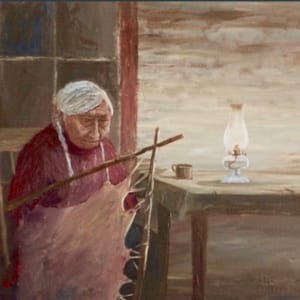
Albert Cloutier (1902-1965)
Albert Cloutier (1902–1965) was a Canadian painter and illustrator known for his contributions to Quebec’s artistic scene. Born in Trois-Rivières, Quebec, Cloutier studied at the Montreal School of Fine Arts and became a prominent figure in the province’s art community. His work spanned various styles, from early Impressionism to more contemporary approaches, with a particular focus on landscape and rural scenes. Cloutier’s art was characterized by its vibrant color palette and a deep connection to Quebec’s natural beauty. Though less widely recognized outside of Quebec, he remains an important figure in the region's artistic history.
